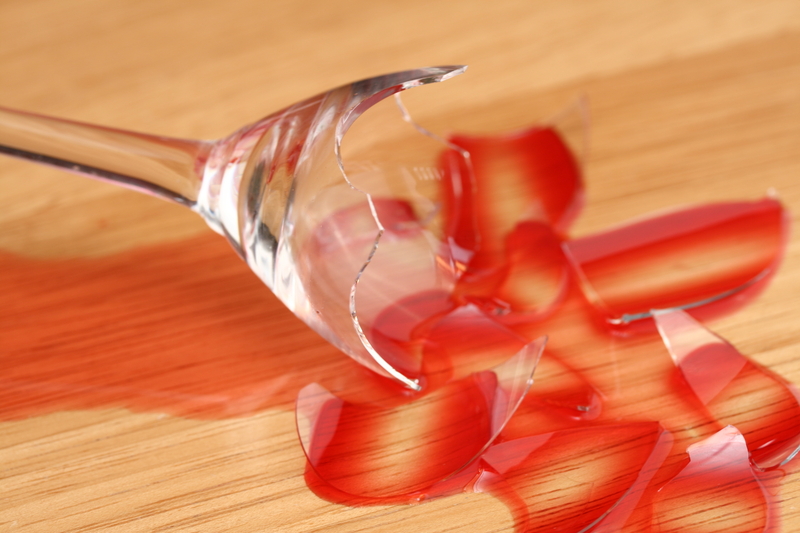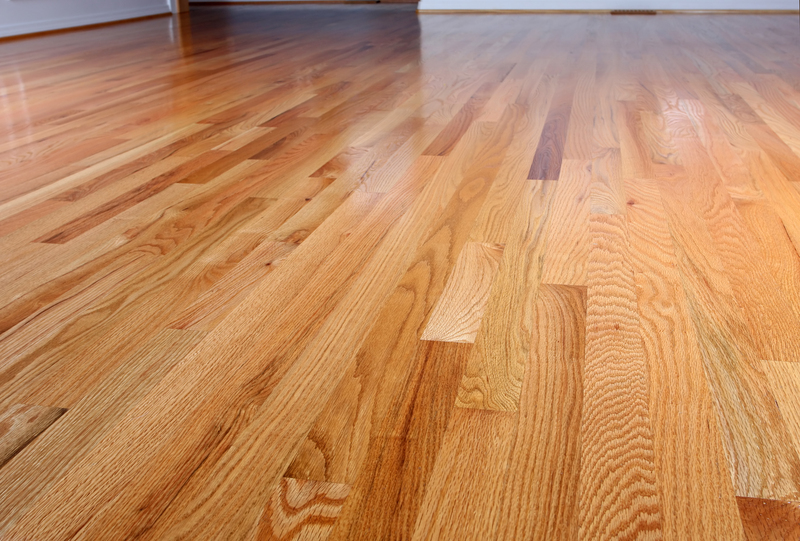Unlock the Secrets to Spotless Curtains
Posted on 11/06/2025
Unlock the Secrets to Spotless Curtains: The Ultimate Guide
Curtains are an essential part of home decor, transforming any room with their patterns, textures, and colors. Yet, despite their appeal, keeping curtains spotless often feels like an impossible feat. Dust, stains, and allergens easily accumulate, quietly diminishing their beauty and freshness. So, how do you reclaim the radiance of your drapes and keep them pristine?
Discover our comprehensive, step-by-step guide to unlocking the secrets to spotless curtains, ensuring your window treatments look as stunning as the day you hung them.

Why Clean Curtains Matter
It's easy to overlook the importance of curtain cleanliness--but the hidden impact on your home environment is immense.
- Health: Curtains trap dust, pet hair, pollen, and mold spores, which worsen allergies and respiratory conditions.
- Lifestyle: Clean curtains enhance the overall look of your interiors, lifting the ambiance and making your rooms feel brighter.
- Longevity: Regular cleaning prevents fabric deterioration, mold, and stubborn staining, prolonging the life of your drapes.
- Air Quality: Spotless curtains help maintain fresher indoor air by eliminating the dust and particles clinging to them.
Ready to unveil the insider tips for keeping curtains spotless? Let's dive into the best techniques for every kind of window covering.
Types of Curtains and Best Cleaning Methods
Each curtain type demands a unique cleaning strategy. Understanding your curtain's material is the first step to achieving a truly deep clean.
1. Cotton and Linen Curtains
The most common drapery materials, cotton and linen, collect dust and may absorb odors but are relatively easy to maintain.
- Machine Wash: Most cotton and linen curtains are machine-washable. Use cold water and a gentle cycle to preserve the fabric's texture and prevent shrinkage.
- Detergents: Choose mild, fragrance-free detergents to avoid residue and fading. Avoid bleach unless the fabric is white and bleach-safe.
- Drying: Prefer air-drying. If you must tumble dry, use the lowest heat setting to avoid wrinkles and shrinkage.
2. Velvet Curtains
Velvet drapes add luxury but attract dust and are sensitive to water and rough washing.
- Vacuum Routine: Use a brush attachment to gently vacuum at least once a week.
- Steam Cleaning: Steaming helps refresh velvet by removing wrinkles and minor dirt while reviving its plush look.
- Dry Cleaning: For deep stains or annual maintenance, professional dry cleaning is safest.
3. Sheer and Lacy Curtains
Light and delicate, sheer curtains and lace panels demand extra care.
- Hand Wash: Wash in cool water using very mild detergent. Never twist or wring the fabric.
- Rinse and Dry: Rinse thoroughly and hang to air dry immediately, away from direct sunlight.
4. Synthetic Curtains (Polyester, Acrylic, Nylon)
Resilient and easy to manage, these curtains often resist wrinkling and fading.
- Machine or Hand Wash: Use cold to warm water cycles and mild detergent.
- Quick Dry: They usually dry fast--avoid excessive heat to maintain shape and color.
5. Blackout and Thermal Curtains
With specialized linings, blackout and thermal curtains repel sunlight but easily collect dust.
- Spot Clean: Use a damp cloth with mild detergent for obvious spots.
- Vacuum: Regular vacuuming keeps dust and debris at bay.
- Do Not Machine Wash: Submerging these in water can damage the lining. Always consult the care tag.
Step-by-Step Guide: How to Clean Curtains Like a Pro
From routine maintenance to deep cleaning, follow these expert steps for truly spotless curtains:
Step 1: Read the Care Label
Every curtain comes with a care tag--don't ignore it! The label provides crucial instructions regarding water temperature, safe detergents, and appropriate cleaning methods. For example, some fabrics are strictly dry-clean only, while others tolerate gentle machine cycles.
Step 2: Regular Dusting and Vacuuming
For ultimately spot-free curtains, dust them at least once a week. Attach a soft brush to your vacuum and run over all surfaces, including the folds and hems. This simple habit keeps dust, allergens, and pet hair from building up.
Step 3: Remove Stains Immediately
Timing is essential. As soon as you notice a mark, act quickly.
- Blot stains with a clean, damp cloth--never rub, as this can spread the stain and damage fabric fibers.
- Use a gentle stain remover or a homemade solution (like diluted white vinegar or baking soda), ensuring it's safe for your curtain's material.
- Test any cleaning agent on an inconspicuous section first to check for colorfastness.
Step 4: Machine or Hand Washing
If your curtains are washable:
- Remove hardware (hooks, rings, etc.) to avoid damaging both fabric and washing machine.
- Wash with similar colors in cool or warm water on a gentle cycle.
- Air dry whenever possible to prevent shrinkage and preserve texture. Re-hang while slightly damp for a wrinkle-free finish.
Step 5: Ironing and Steaming
Wrinkles drag down the elegance of even the cleanest curtains. Iron or steam your curtains as needed. For delicate or sheer materials, use the lowest iron setting with a protective cloth as a barrier. Steamers are safe for most fabrics and especially effective on velvet and heavy materials.
Common Curtain Cleaning Mistakes to Avoid
- Ignoring the care label: Always check for special instructions before starting.
- Excessive detergent: More soap doesn't mean cleaner. Excess can cause buildup and fading.
- Using hot water: Hot water often leads to shrinkage and color bleeding.
- Tumble drying on high: High heat damages most fabrics; choose air drying or low heat.
- Hanging wet curtains in the sun: Intense sunlight can bleach colors and weaken fibers.
Secret Solutions for Stubborn Curtain Stains
Some stains require extra effort and ingenuity to remove. Here's how to tackle common troublemakers:
Grease and Oil Marks
- Sprinkle cornstarch or talcum powder over the stain to absorb oil. Let it sit for 20-30 minutes, then brush away excess.
- Follow with a gentle detergent solution, blotting (not rubbing) until the mark fades.
Mold and Mildew
- Take curtains outside to prevent spreading spores indoors.
- Scrape off excess mold, then treat affected areas with a mix of lemon juice and salt. Sun-dry if possible.
- For hardier fabrics, diluted hydrogen peroxide can help, but always test first!
Ink and Marker Stains
- Dab the stain with rubbing alcohol or a specialized ink remover (check colorfastness first).
- Rinse thoroughly and wash as usual.
Preventive Measures for Spotless Curtains
- Maintain Clean Windows: Dirty windows lead to dirty curtains. Clean glass and sills every two weeks to prevent transfer of dust and grime.
- Use Curtain Liners: Liners protect your curtains from dirt, UV fading, and condensation.
- Avoid Smoking Indoors: Tobacco smoke clings to fabric, causing discoloration and persistent odors.
- Pet and Child Safety: Keep pets and small children away from curtains to minimize soiling, fur, and handprints.
- Seasonal Deep Cleaning: Every six months, conduct a thorough curtain cleanse. Rotate drapes between rooms to prolong fabric life.
Professional Curtain Cleaning: When to Call the Experts
Sometimes, DIY approaches might not suffice. Here's when to reach out for professional help:
- Your curtains are labeled "dry clean only."
- Delicate or antique fabrics need specialized care.
- Extensive stains, persistent odors, or mold have set in.
- You have thermal or blackout drapes that can't withstand home washing.
Professional cleaners use tailored solvents, methods, and machinery to revive and renew curtains with no risk to delicate threads or linings.
Bright Ideas: Curtain Cleaning Hacks and Innovations
Technology is revolutionizing home care. Consider these smart tips for spotless drapes:
- Portable Garment Steamers: Ideal for on-the-rod touch-ups and removing light stains or wrinkles without taking down curtains.
- Microfiber Dusters: Static-charged dusters attract more particles than traditional cloth, making weekly maintenance fast and efficient.
- Aromatherapy: Lightly mist curtains with a fabric-safe, essential oil-infused spray to neutralize musty odors and infuse freshness.
- Vacuum Robot Extensions: New attachments for robot vacuums allow for low-level curtain dusting with no extra effort from you!

Frequently Asked Questions: Spotless Curtains Edition
How often should I wash my curtains?
Ideally, deep clean your curtains every six months, but perform routine vacuuming or dusting weekly to keep them looking immaculate.
Can I use bleach on my curtains?
Only on pure white, bleach-safe fabrics. Colored or delicate materials will fade, discolor, or degrade with bleach.
What's the best way to dry curtains?
Air drying preserves fabric strength and shape. If tumble drying is necessary, use the lowest heat setting and remove promptly to avoid creases.
Are curtain cleaning sprays safe?
Most commercial sprays are safe for colorfast curtains, but always test a hidden area first and avoid "all-purpose" sprays containing harsh chemicals on delicate fabrics.
Conclusion: Enjoy Spot-Free, Gorgeous Curtains All Year Round
Unlocking the secrets to spotless curtains isn't just about aesthetics--it's about maintaining a clean, healthy, and welcoming home. With the routine methods, preventative measures, and expert tips we've shared, you can transform even tired drapes into dazzling showcases of style.
Make curtain care a part of your regular cleaning rotation, and you'll enjoy fresher air, vibrant interiors, and peace of mind--all with minimal effort!
If you've ever wondered how experts keep curtains spotless and fresh, now you possess all the tricks and truths. Your gleaming, dust-free curtains are just a cleaning session away!


